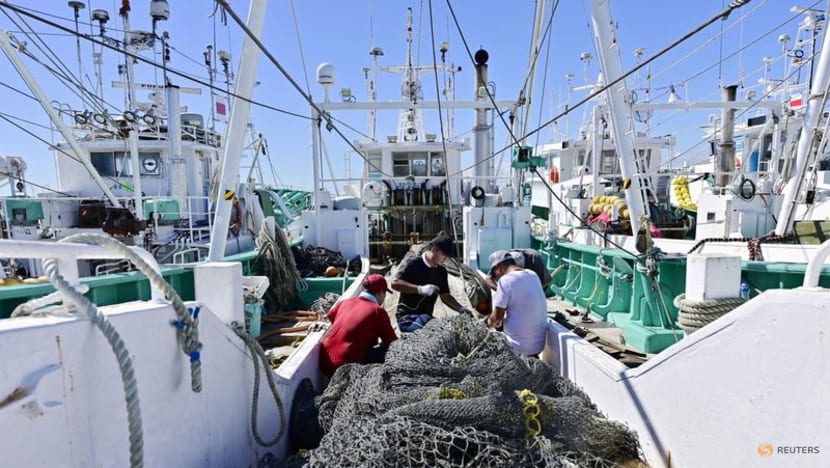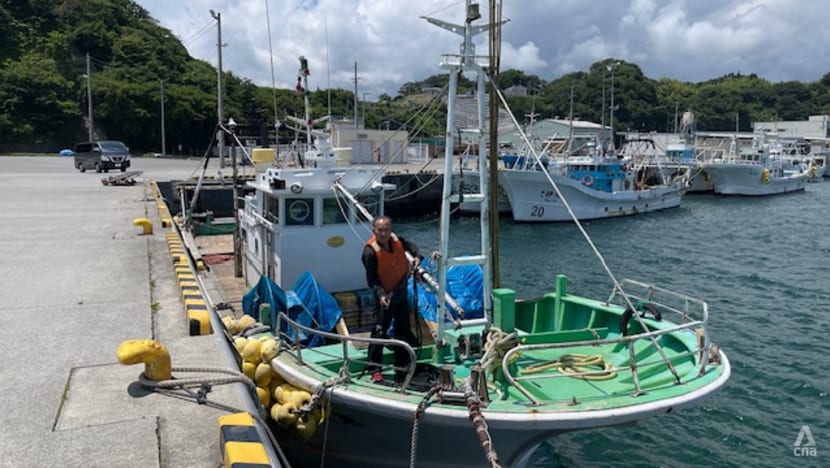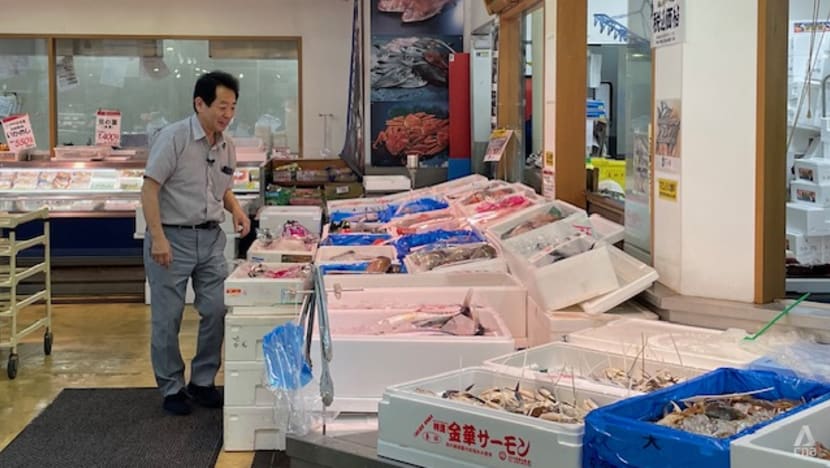Fukushima fishermen fear backlash from consumers as nuclear plant operator prepares wastewater release
The operator of the damaged Fukushima Daiichi Nuclear Power Plant announced on Tuesday (Aug 22) that it would start releasing treated wastewater into the sea as it is running out of storage space.

FUKUSHIMA: Fishermen in the vicinity of the doomed Fukushima Daiichi Nuclear Power Plant are concerned that the release of treated wastewater from the site will make consumers shun their fish, affecting their livelihoods even before any meaningful recovery.
The operator of the damaged nuclear power plant, Tepco, announced on Tuesday (Aug 22) that it would start releasing treated wastewater into the sea from Aug 24 as it is running out of storage space.
The plant was damaged in 2011, after Japan was struck by a magnitude 9 earthquake – the strongest earthquake ever recorded in the country – and a subsequent tsunami.
Three reactor cores at the Fukushima Daiichi Nuclear Power Plant melted, releasing radiation into the atmosphere and ocean in what remains the world’s worst nuclear accident since Chernobyl.
Tepco has over the last decade been continually pumping water into the failed reactors to prevent them from overheating and causing further damage, collecting over a million tonnes of contaminated water in more than a thousand steel tanks in the process.
It now has no choice but to release the wastewater into the sea, as the decommissioning of the plant takes place over the next 40 years.
SLOWLY RECOVERING
In the tiny coastal town of Hisanohama in Fukushima, three stone plaques in a local shrine bear the names of the victims and an epitaph of the March 11, 2011 disaster.
The town of 2,000 was struck by a 7m-high tsunami 12 years ago, causing a fire which could not be extinguished for two days, destroying more than half of the homes and killing 68 people.

Today, most homes have been rebuilt, and aftershocks of the earthquake have also gradually subsided.
However, for many years, sea products from Hisanohama and the surrounding region were shunned in Japan and globally because of contamination fears.
Fishing was banned in the immediate aftermath of the nuclear meltdown, before trial fishing resumed in 2013. The Hisanohama fishing port was only fully reopened in 2019.
Fishermen, such as Mr Akira Egawa, told CNA the volume of catch is still a far cry from before the triple disasters.
In 2020, fish catch in Fukushima was only 18 per cent of what it used to be, with the pandemic-induced shutdown further impacting their livelihoods.
Mr Egawa, chairman of Iwaki Fisheries Cooperatives, told CNA he is worried that the wastewater release would turn customers away from his fish.

“The discharge will mean trouble for us. We will not be able to make a livelihood. We will not be able to attract successors,” he said.
He added that while fishermen like himself are grateful for subsidies from the government, they are still against the release of the wastewater.
STRINGENT SCREENING STANDARDS
Mr Egawa assured consumers that the fish going out to the market and consumed by the public is safe, with stringent screening constantly conducted.
At one of four labs operating in Fukushima since the nuclear meltdown, fish samples are sliced up and placed into a machine where the level of radiation is measured, with results revealed in five minutes. Only those that pass the test can be sold.
Mr Egawa said the local fishery industry has set a maximum permitted radiation level of 50 Bq/kg, much stricter than the 100 Bq/kg cap by the national government.
That means that seafood sold at local markets, for instance, have met tougher safety standards than at the broader national level.

Mr Yukio Onozaki, who owns a century-old fresh fish shop in Fukushima, said there is no reason for consumers to be concerned.
Mr Onozaki, who is president of Onozaki, told CNA: “Today, screening results are relatively good. I don’t really think much about it. It’s just part of the whole process where products reach us from the sea and we sell them. Screening is part of the norm.”
He is not worried about the treated water being released as he is convinced by the data presented that it is safe.
TREADING CAREFULLY
A nationwide survey last month showed that more Japanese were supportive of the water discharge, than those who were against it.
The government, however, is still treading this issue carefully.
Mr Rafael Grossi, director general of the International Atomic Energy Agency (IAEA), met with representatives of local stakeholders in a Fukushima hotel ballroom on July 5, where he explained why the agency endorsed Japan’s water release plan.
“This is certified by IAEA. The general practice is agreed and observed in many places all over the world,” said Mr Grossi, who was on a weeks-long tour around the region.
“We are going to stay here with you for decades to come until the last drop of water which has accumulated around the reactors has been safely discharged.”


















